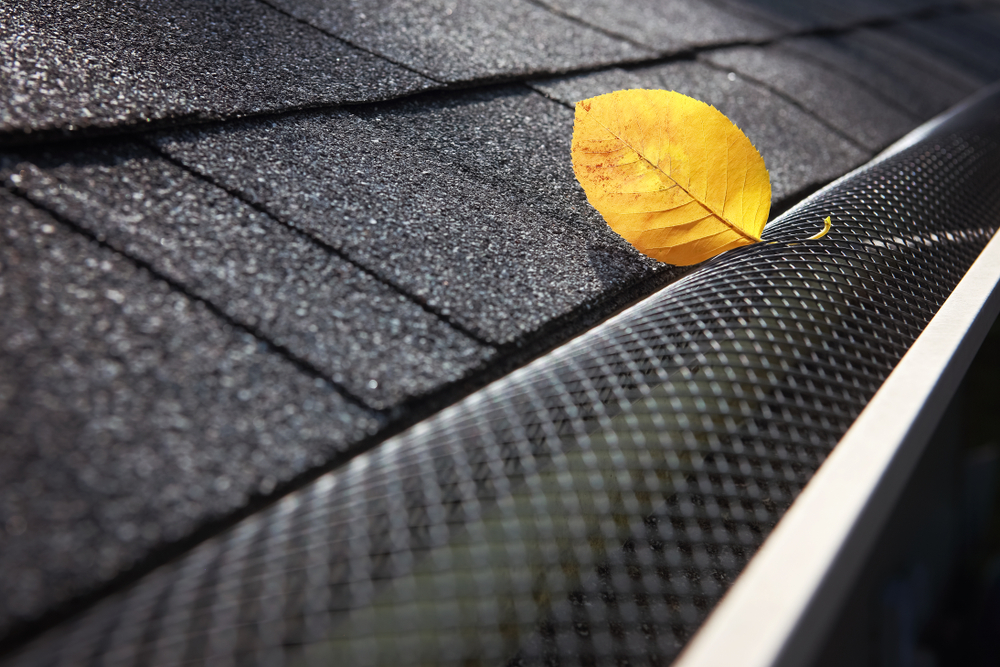
by royalcrownroofing | Nov 30, 2022 | Gutters, Roof Inspection, Roof Maintenance
Gutters divert rainwater away from your roof, walls and the foundation of your home, preventing stained siding on the outside of your house, water seeping down interior walls, puddles on your floors, and water damage to your foundation. So, gutters really are necessary!
When properly installed and maintained, gutters will prevent all these problems. But, when they get clogged up and rain can’t drain off your roof, the structure of your roof will be weakened, and the wood under the roofing will rot away, providing openings for critters of all types to build nests and nuzzle into corners for protection against the weather. But this does the opposite for you – it destroys the protective barrier between you and the weather – your roof.
Water left on your roof can also cause mold – that fuzzy, slimy, greenish-black growth. When spreading into your home, you, your pets’, and your family’s health will be in peril from lung problems. Mildew is another danger that will cause breathing problems, not to mention make your walls ugly with its green, black, red or pink powdery growth.
You may think you can climb up your ladder and clean out your gutters, but if you aren’t in the best shape, or you find it a stressful situation, it’s a good idea to get professional help. Royal Crown Roofing can get it done for you. At the same time, they can provide a free roof inspection to make sure all is in order on your roof. Contact them for help.
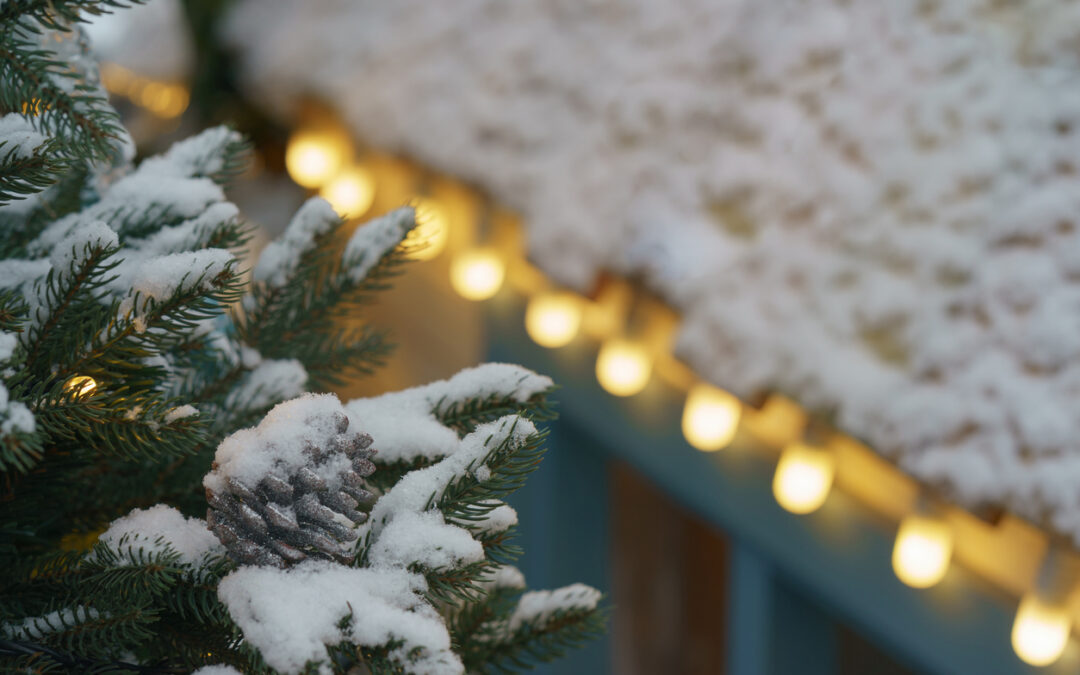
by royalcrownroofing | Nov 22, 2022 | Roof Inspection, Roof Maintenance
Who’s going to put up your outdoor holiday lights this year – you, your nephew, niece, or grandkids? Remember those who aren’t experts with the proper safety precautions for working on roofs and with electrical equipment may be in danger of an accident.
Make sure whoever does the job understands the following tips for keeping them and your home safe during the season:
– Check out all of the light strands before climbing up on the roof. Make sure everything’s in working order. Replace burnt-out bulbs with those of the same wattage, and check out the wires for fraying or other damage.
– Get rid of antiquated strands and lights. New ones are safer, because they have fused plugs that protect you from fire.
– Clear out leaves and debris from off the roof to avoid a fire.
– Use insulated materials rather than nails and screws to position the lights – sharp edges can fray wires and cause fires.
Follow rules for ladder safety:
– Set up ladders on sturdy, dry, level ground, away from power lines, obstructions and doorways. Avoid rocky, loose or slippery substances like wet grass.
– Wear shoes that won’t slip and make sure the ladder rungs are not wet or covered with debris.
– Never climb a ladder backwards, turn around on it, or shift your weight to reach something.
– Never climb to the highest rung.
– Climb down and move the ladder when necessary in order to reach something. Don’t overreach.
Royal Crown Roofing wishes you the happiest and safest holiday season ever.
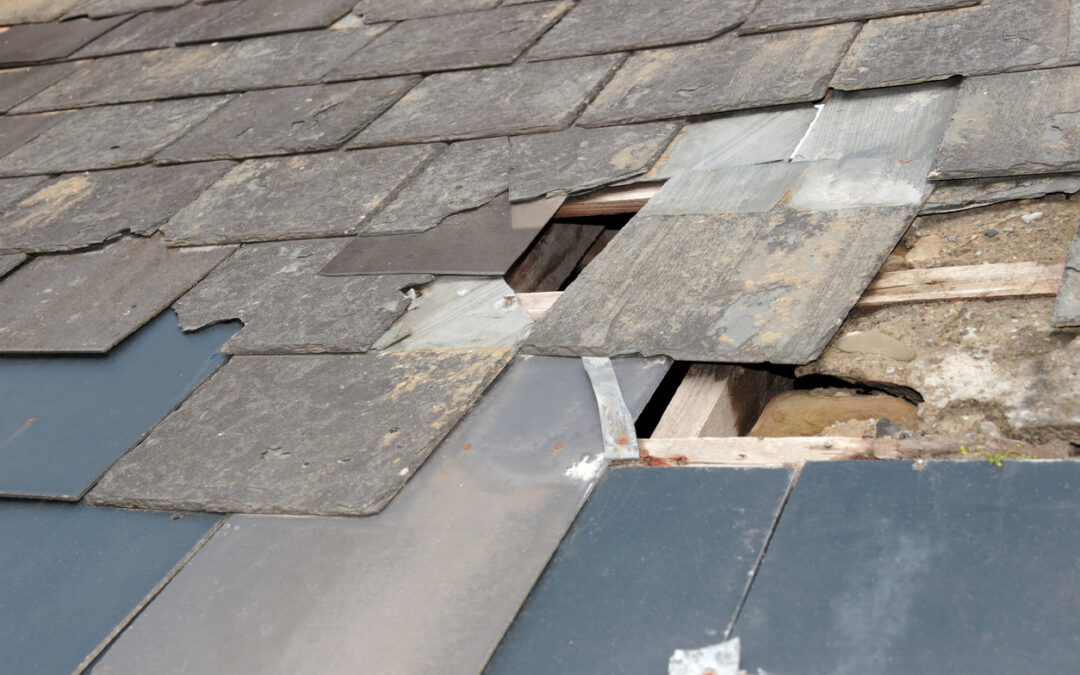
by royalcrownroofing | Nov 15, 2022 | Roof Inspection, Roof Maintenance
Whenever your roof suffers from sharp pressures and heavy weights, holes may be the result – holes that are hard to find. These holes can be the source of moisture, insects, and even animals working their way into your roof. Difficult to locate, these holes can lead to bad leaks inside your home with the coming bad weather. Once you’ve got a leak, it can work its way laterally through the roof to make itself known in some other parts of your home.
Since most antennas, exhaust fans, solar panels and HVAC systems tend to have less than adequate reinforcements, roof punctures often result. And people who walk on roofs like plumbers and technicians, bringing their equipment and tools with them, can cause them. Of course, older roofs are more susceptible to punctures.
Animals, including squirrels, raccoons, mice, rats, and birds are good at getting into roofs, causing their own punctures with their scratches and pecks. They build nests and take to breeding more little creatures to live in and damage your roof.
And what we all fear is severe weather, like intense hailstorms where hail pounds into the roof, leaving multiple holes that need repair.
As winter makes its way into the Houston area, you may be in for unexpected complications on your roof. Make sure to contact Royal Crown Roofing for your free roof inspection before winter sets in, and prevent any expanding problems resulting from current punctures. And be sure to contact them if and when any future damage occurs.
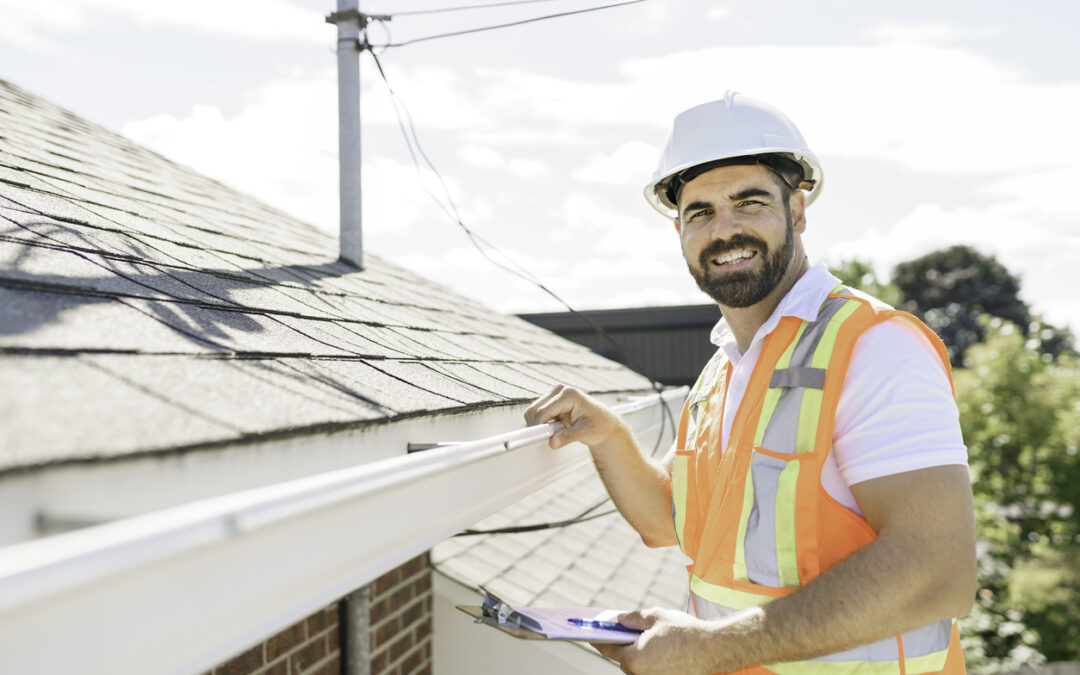
by royalcrownroofing | Nov 8, 2022 | GAF Roofing, Roof Inspection, Roof Maintenance
Today, more homes in the United States have asphalt shingles on their roofs than any other type of roofing, and they have had them since 1903, when Henry Reynolds of Grand Rapids, Michigan invented them. By 1939, they were the most popular shingles in America.
These early asphalt shingles were much different from today. Henry made them with an inner layer of organic materials, like paper and wood shavings covered with asphalt – a thick, black, sticky, semi-solid type of petroleum, also known as bitumen, that’s especially effective at resisting water. On top of the asphalt, Henry laid stones and cut the shingles into 8” by 12” pieces.
Today’s GAF asphalt shingles, which are manufactured in Baltimore, Maryland, cover most of our houses in the USA. Rather than paper or wood inner cores, they are made with high-strength interwoven fiberglass mats, fused together with multiple layers of the same and saturated with asphalt, making them resistant to tearing, rain, wind, cracking and impact. They can withstand winds between 110 and 130 miles per hour.
GAF shingles are so popular in the United States because of the combination of their great quality and cost effectiveness. On top of that, they come in multiple colors and styles that provide great curb appeal, which adds value to homes.
For more information about how GAF shingles can add protection, beauty, and value to your home, contact Royal Crown Roofing. They will gladly assist you in defining your needs.

by royalcrownroofing | Oct 28, 2022 | Roof Inspection, Roof Leaks, Roof Maintenance
It can originate anywhere in your roof—even rooms away—and drip from ceilings and down walls, leaving yellow stains. What do you do?
Do you tear your roof apart until you find it? And what if in addition to the water dripping from your ceiling and walls, you smell a musty odor and wonder if mold is growing?
Before you move out, contact Royal Crown Roofing for their help pinpointing the source of the leak without destroying your expensive roof, walls, and ceiling. They can use their thermal imaging cameras to find where the moisture and water are hiding inside your roof so the problem can be rectified.
Thermography is non-destructive, so no part of the roof needs to be removed for it to work. It can find problems in areas you couldn’t easily access, even if you did tear your roof apart. The images it creates are easy to read and are produced quickly so fixing the leaks can be done immediately, saving both time and money. This process, in addition to locating current leaks, can also indicate where the roof is weak and where future leaks may occur when weakened by time or the weather.
Contact Royal Crown Roofing today for a free inspection and get set up to do the thermal imaging. When they find out what’s going on, they can take care of repairs quickly before winter sets in.
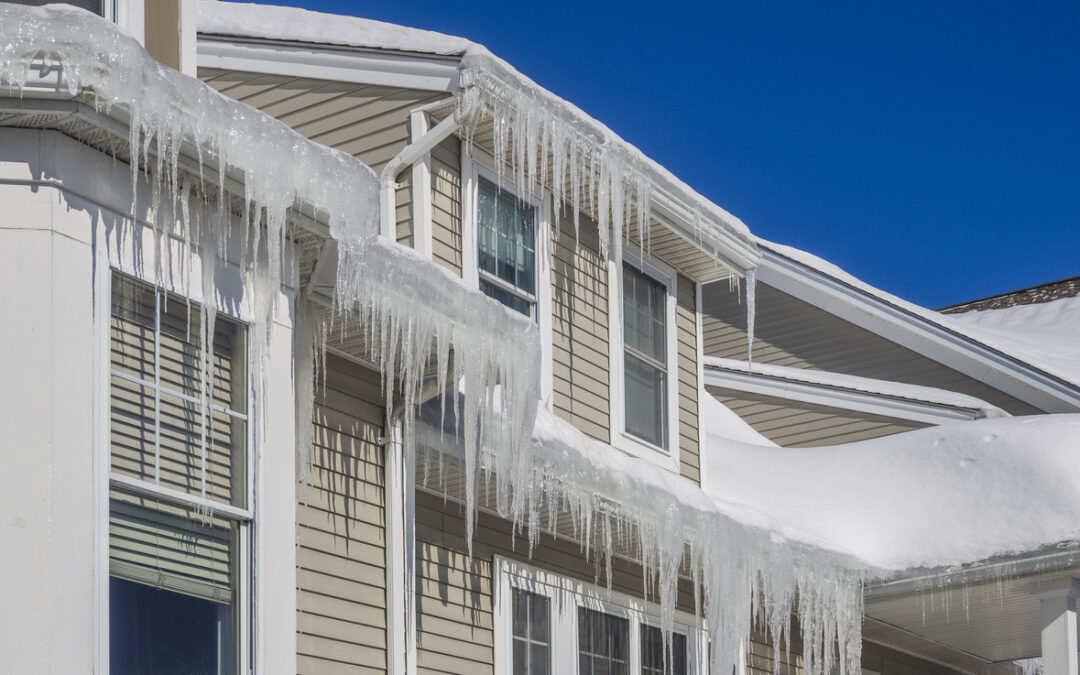
by royalcrownroofing | Oct 21, 2022 | Emergency Preparations, Roof Inspection, Roof Maintenance
There are wise measures you can take to prepare for winter weather. Your house needs special care, especially on the roof. A proper clean-up includes getting rid of leaves, branches, and debris in gutters, plus checking out the flashing around vents, pipes, dormers, skylights, and chimneys. Doing any necessary repair work now can save a lot of frustration later when it gets cold outside, possibly even as cold as last February was here in Houston.
When the weather gets cold and wind, sleet, and rainstorms come to Houston, ice dams can build up along the edge of your roof, preventing water from draining off of it and leaving water and ice sitting there, ready to damage the roof and seep into your home. And gutters stuffed with litter and leaves can contribute to the problem.
Hopefully, the Houston area won’t again lose power just as it did last year in the middle of a sub-arctic freeze. Yes, hopefully, we won’t have either type of emergency. But, it’s smart to be prepared for anything, and even if we have warm weather and mild rainstorms, roofs need to be taken care of in order to avoid damage.
A roof inspection can reveal what your roof needs to endure whatever kind of weather’s on its way. Contact Royal Crown Roofing for a free inspection and to make sure your roof is in good order.
Page 3 of 9«12345...»Last » 








